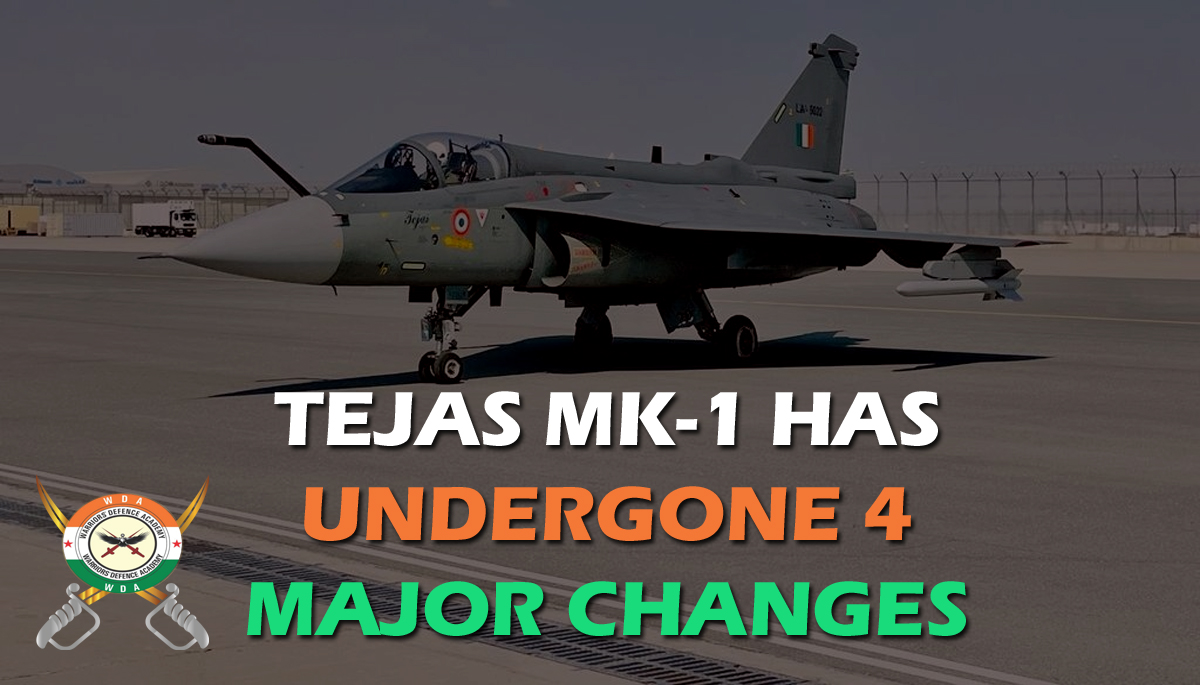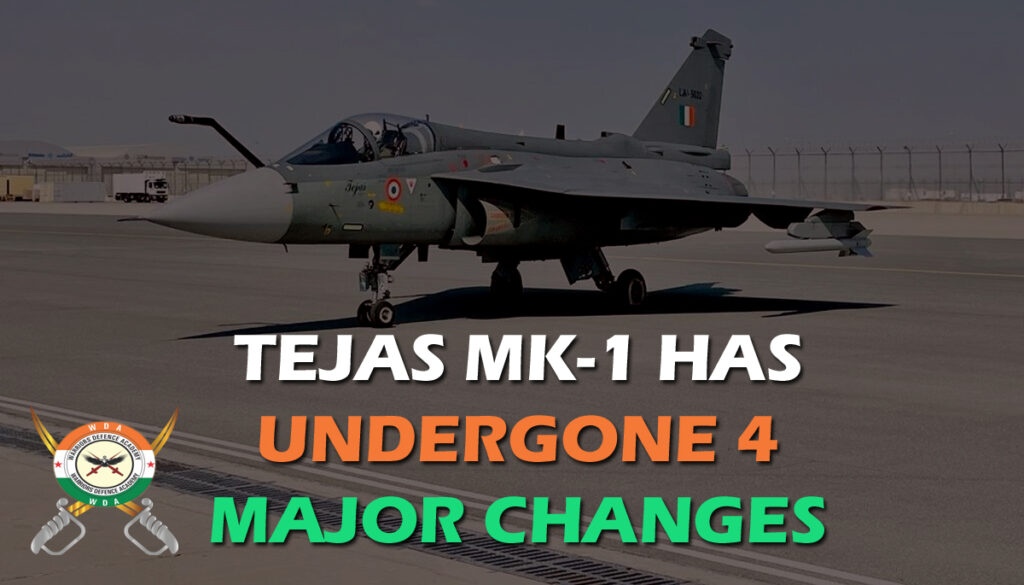Introduction: Tejas MK-1
In the ever-evolving world of aviation, staying at the forefront of technology is crucial. The Tejas MK-1, India’s very own indigenously developed fighter aircraft, has gracefully met this challenge by undergoing four major changes. From its inception to its current iteration, let’s take a look at how the Tejas MK-1 has transformed from a promising project to a technologically advanced marvel.

The Birth of an Ambitious Vision:
In the early 1980s, the Light Combat Aircraft (LCA) project (now known as the Tejas) was initiated with the vision of developing a multi-role fighter aircraft capable of meeting the requirements of the Indian Air Force. It laid the foundation for what would evolve into one of India’s most significant defense programs.
Enhanced Aerodynamics and Structural Enhancements:
One of the key improvements in the Tejas MK-1 was a series of modifications to enhance its aerodynamics and improve its overall structural strength. Changes to the wing design, reduced radar cross-section, and a lighter yet stronger airframe have all contributed to better maneuverability and increased stealth capabilities, making the MK-1 a formidable force in the skies.
Advanced Avionics and Systems Integration:
To match the technological prowess of modern warfare, the Tejas MK-1 incorporated robust avionics and advanced systems integration. Upgrades in this area have provided the pilots with state-of-the-art electronic warfare systems, improved controls, and enhanced situational awareness. These advancements not only maximize the aircraft’s operational capabilities but also ensure the safety and efficiency of our brave pilots.
Upgraded Engine and Powerplant:
Realizing the importance of an aircraft’s engine to achieve optimal performance, the Tejas MK-1 underwent significant changes in this area as well. By incorporating a more powerful GE F404 engine and advanced power management systems, the MK-1 achieved increased thrust, fuel efficiency, and overall range. This transformation propelled the Tejas to new heights, enabling them to fulfill a variety of mission objectives with agility and precision.







Conclusion:
The Tejas MK-1’s journey represents the tireless efforts of scientists, engineers, and defense personnel who have worked relentlessly to develop a world-class fighter aircraft. Through four major changes, from its humble beginnings to its current sophisticated form, the MK-1 has proven its mettle as a symbol of India’s technological prowess. As the development and improvement of the Tejas program continue, we eagerly await the day when the MK-1 will soar through the skies, safeguarding our nation’s security with unmatched supremacy. Never has the phrase “change is the only constant” been more fitting than when witnessing the remarkable evolution of the Tejas MK-1.
